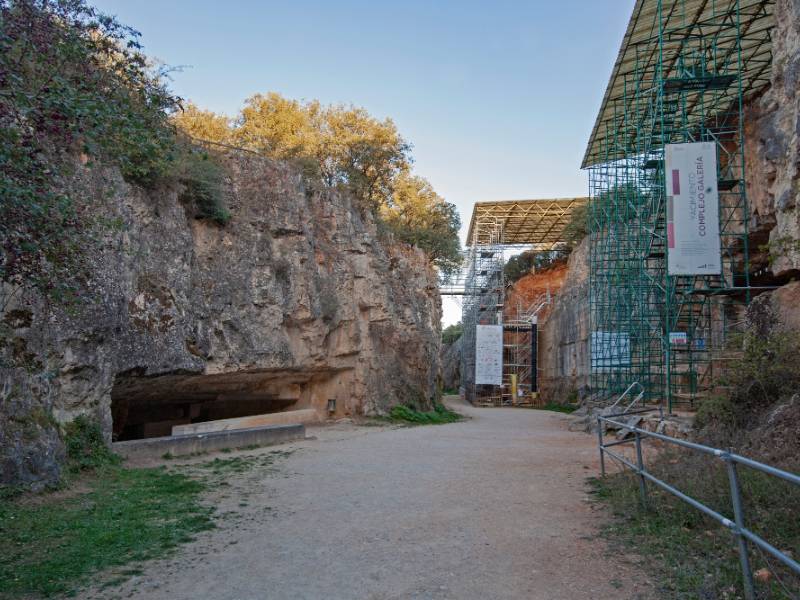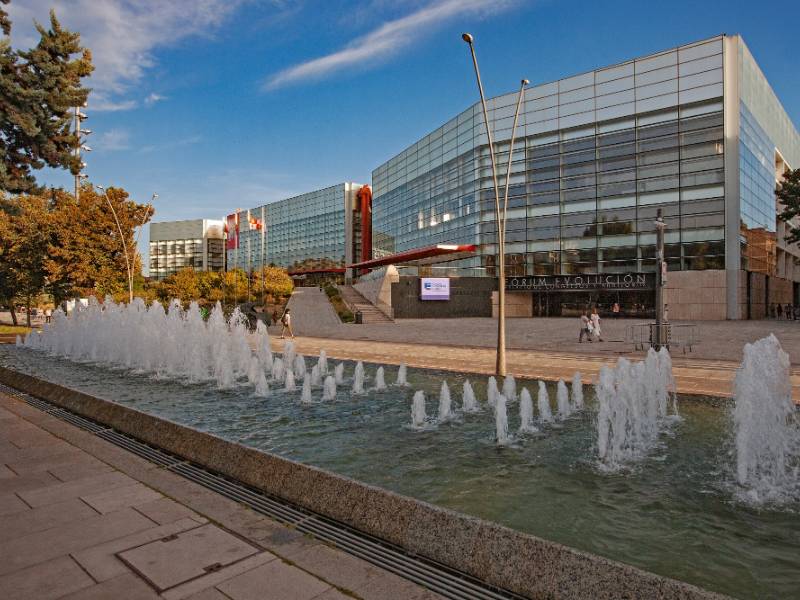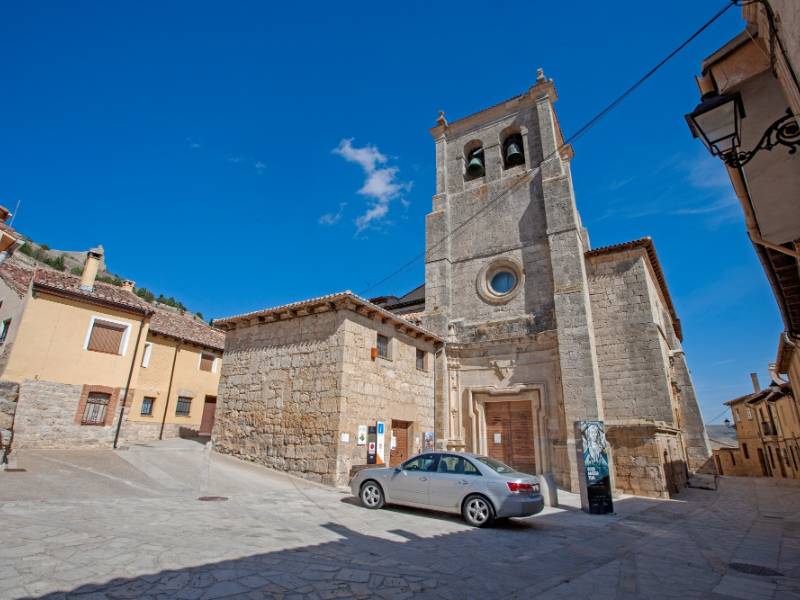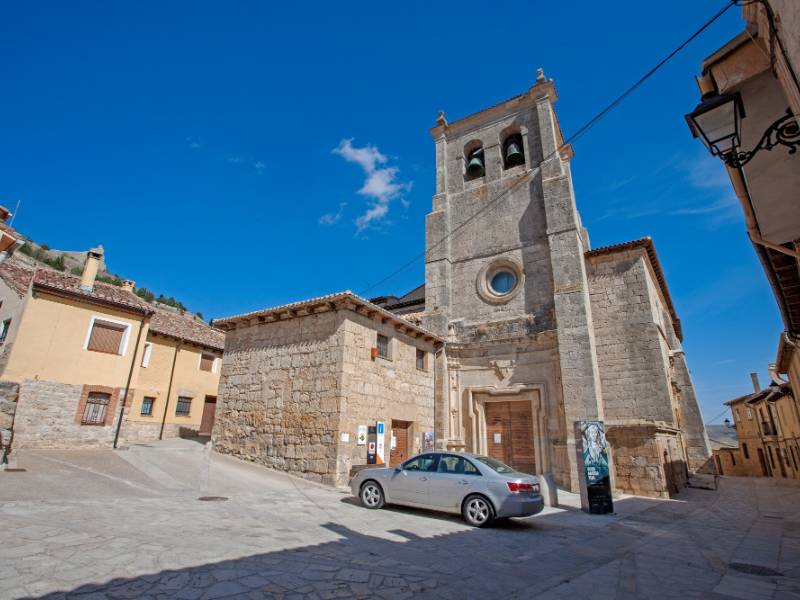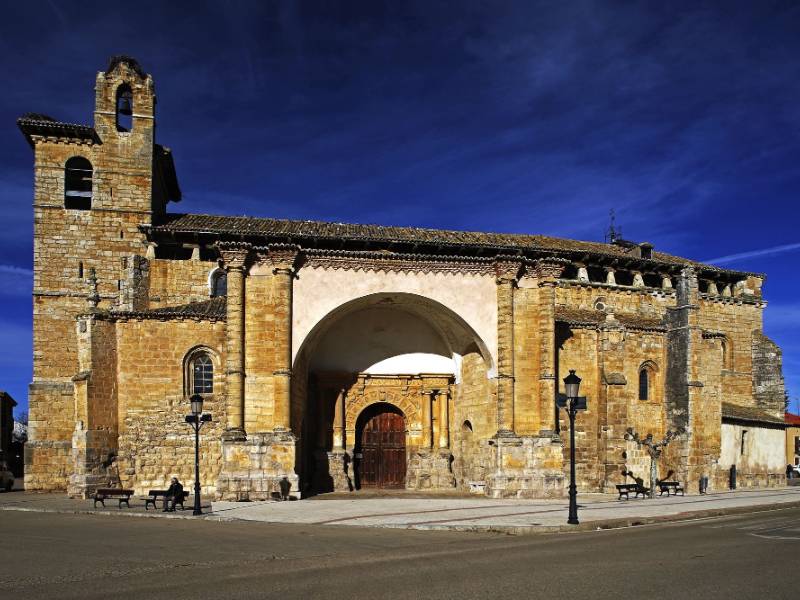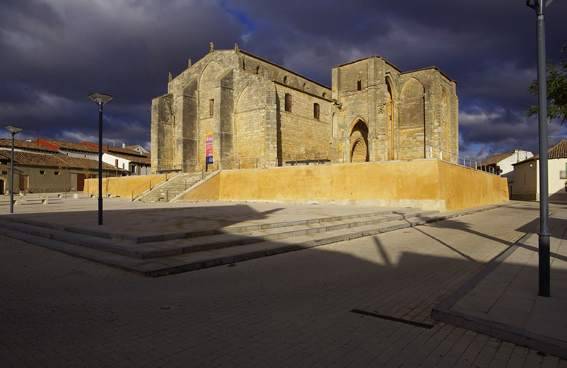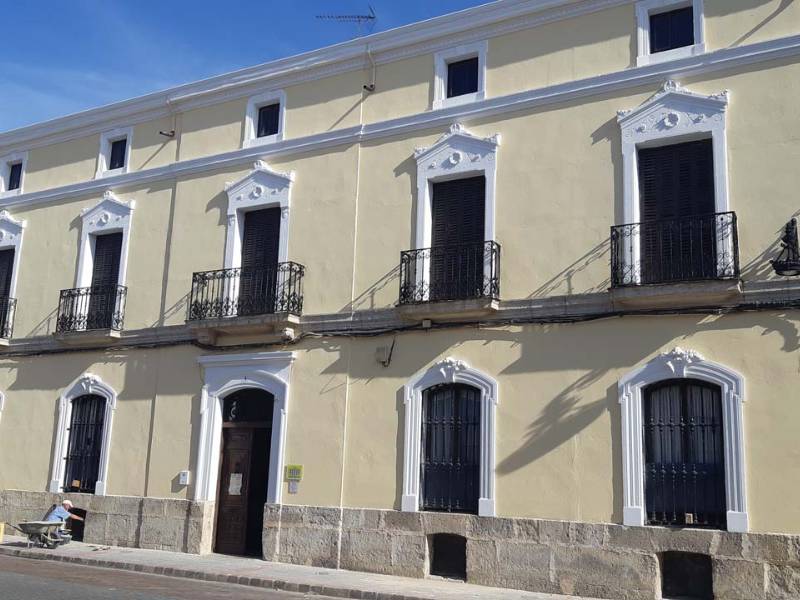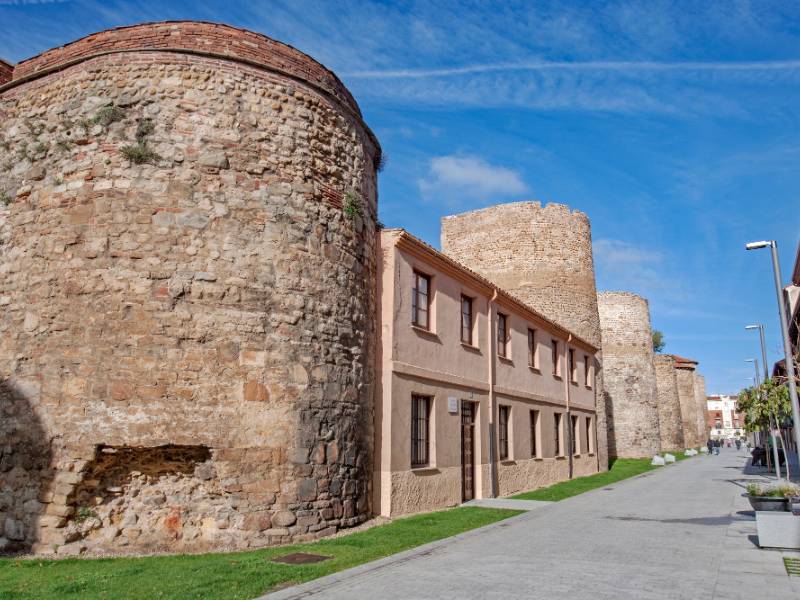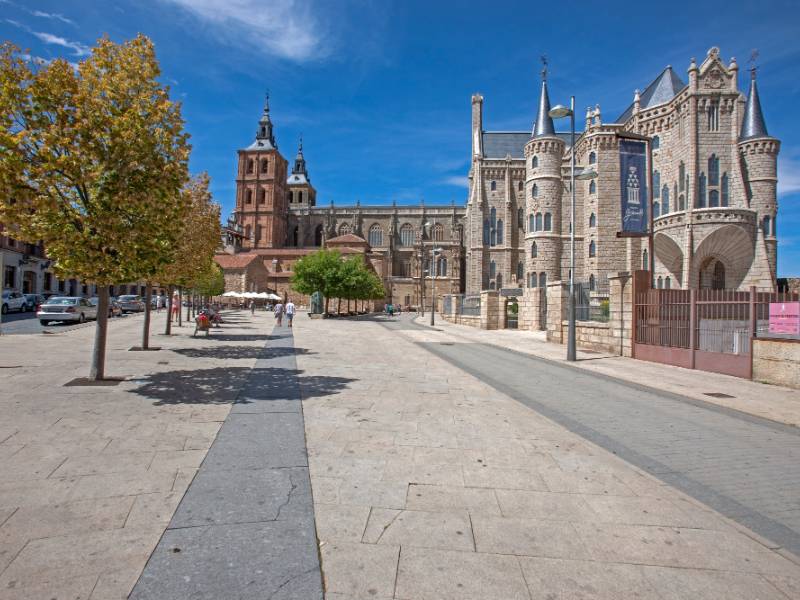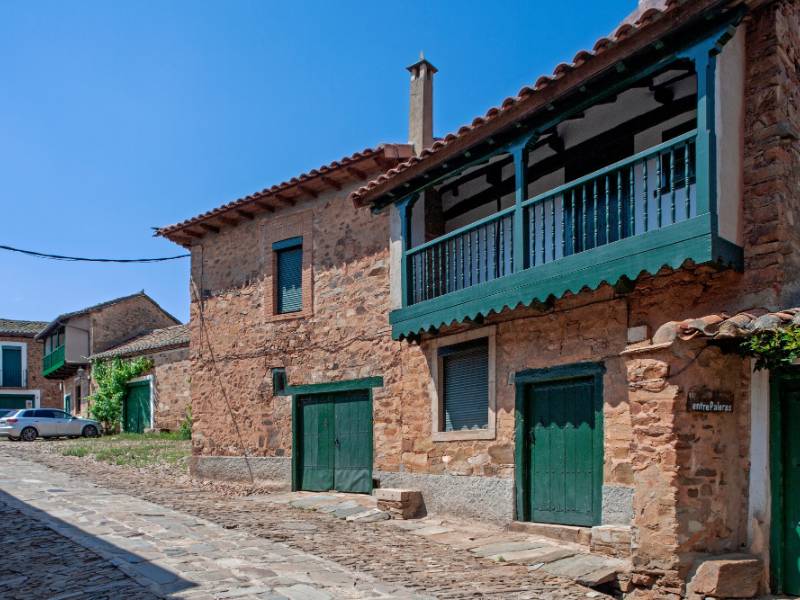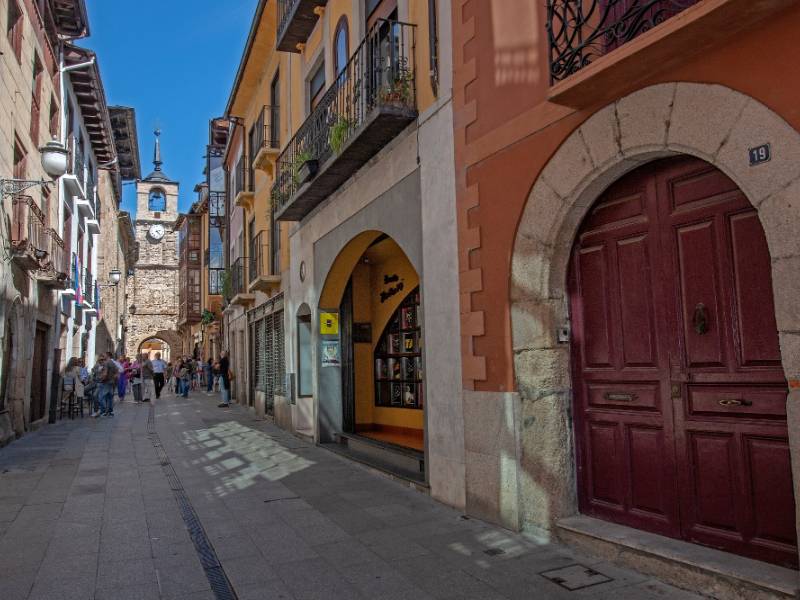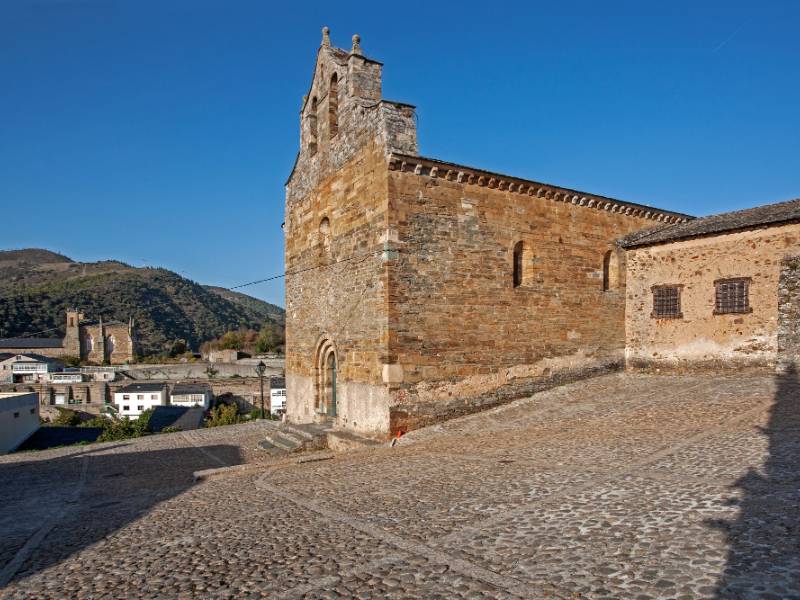Route 7 Camino de Santiago - Burgos
- Previous
- Following
To the northeast of Castile and León, on the banks of the Arlanzón River, stands the historic city of Burgos.
Discover this beautiful city founded in the Middle Ages, but with vestiges of much earlier human settlements, which has been a prominent protagonist in history, first of the kingdom of Leon, then as the capital of the crown of Castile.
Walk through its lively streets and squares where a rich heritage is combined, presided over by its fantastic Gothic cathedral, with a modern and cosmopolitan atmosphere.
Disconnect in the large, peaceful green areas of its surroundings or enjoy its intense cultural activity and top-class traditional cuisine. What are you waiting for to come?
Reference to content
What to see?
 Castle of AlbillosMore information
Castle of AlbillosMore information14th-century castle, privately owned, turned into a five-star hotel.The tower consists of heavy block ashlar on which abundant spans open, being a small part of the original building. It highlights some...
 Burgos CathedralMore information
Burgos CathedralMore informationGet to know one of the masterpieces of Gothic architecture and the most emblematic monument of the city of Burgos. The slender Cathedral of Santa María in the Castilian city has been astonishing residents,...
 Church of the MercedMore information
Church of the MercedMore informationBuilt in the 15th and 16th centuries by Juan de Colonia.
 Church of Nuestra Señora la Real y Antigua de GamonalMore information
Church of Nuestra Señora la Real y Antigua de GamonalMore information14th-century structure with a tower above the facade. It has a single nave and a square apse. The portico contains a Gothic Calvary and a Mudejar door. In 1704 Alfonso VI moved the bishopric from Oca.
 Church of San Cosme and San DamianMore information
Church of San Cosme and San DamianMore informationRebuilt between the 15th and 16th centuries. It has a Renaissance façade by Juan de Vallejo, and a round arch of triumph with medallions of Saint John the Baptist and Saint John the Evangelist.On the facade,...
 Church of San EstebanMore information
Church of San EstebanMore informationThis Gothic structure was badly damaged by an explosion that destroyed the military fortress that stood on the hillock. It was built between the 13th and 14th centuries. The façade contains an artistic...
 Church of San Gil AbadMore information
Church of San Gil AbadMore informationThis large church was built in the late 13th and early 14th centuries.It has three naves with a transept and lateral chapels. Of particular interest are the Capilla de la Natividad, with its Renaissance...
 Church of San LesmesMore information
Church of San LesmesMore informationDating from the 14th and 15th centuries. It has a pointed arch and three Gothic-Renaissance naves. The church was built on a previous structure by the same name that was destroyed during medieval war confrontations...
 Church of San Nicolas de BariMore information
Church of San Nicolas de BariMore informationConstruction started in the 15th century. The simplicity of its faced is in contrast with the richness of its interior. Particularly noteworthy are the stone altarpiece by Simón de Colonia, gothic sepulchres...


